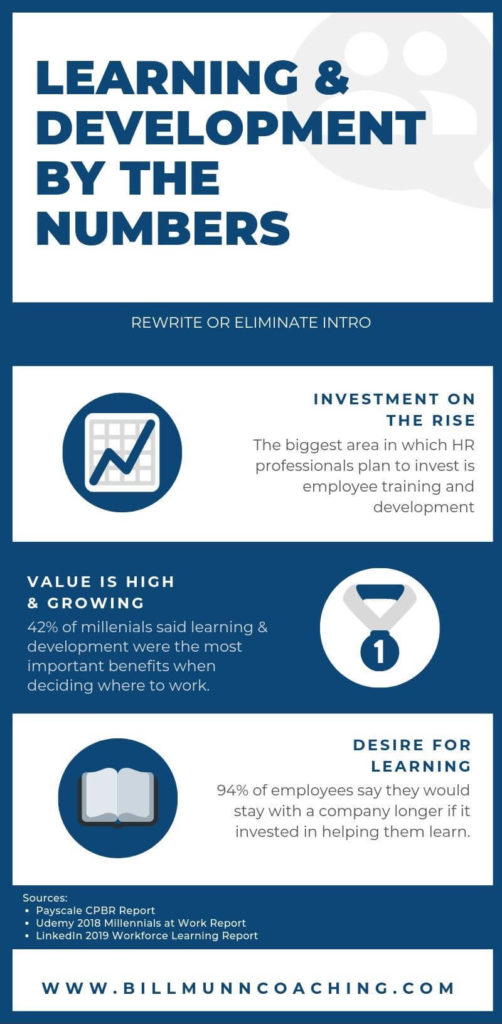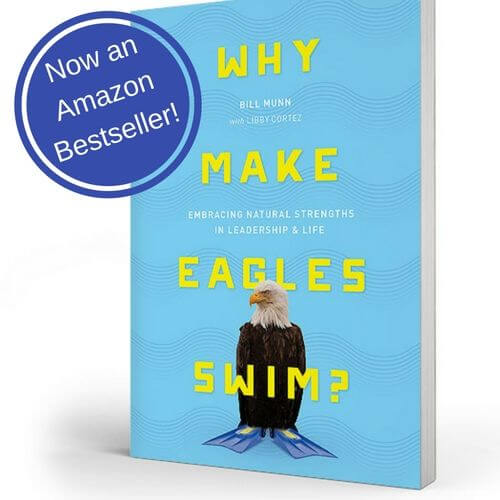Someone recently asked me to respond to a question on Quora about the most impactful program I’ve seen for building leadership and capacity for growth.
Hands down, it’s Attributes.
 I joke that I’ve added the gray hair and wrinkles to create an air of wisdom. But the truth is, I have a lot of experience – both as a corporate executive myself, and as a leadership coach of 30 years. So I’ve seen my share of programs, and I’ve learned a lot about what works.
I joke that I’ve added the gray hair and wrinkles to create an air of wisdom. But the truth is, I have a lot of experience – both as a corporate executive myself, and as a leadership coach of 30 years. So I’ve seen my share of programs, and I’ve learned a lot about what works.
Still, I hesitated to answer this one. My response could be taken the wrong way, since it points to a program that I’ve been preaching and teaching and writing about for over 30 years.
But I can’t lie.
And beyond that, I should share the truth about this. Because I’ve never seen anything that consistently makes as big a difference as the Attributes approach.
Who Should Read this Post?
If you already know about Attributes, should you read on? Maybe, maybe not. Many of you are already quite familiar with the material (after all, this month marks the publication anniversary of a bestselling book on the topic).
So let’s not waste anyone’s time. Here’s who this post is designed for:
- Those who are new to or unfamiliar with power-alley Attributes
- Those who know the concept but would like (a) a refresher or (b) a few new action steps
- Those who know the concept and want an easy way to introduce it to a colleague, friend, family member, etc.
Since there are a great many Attributes-related posts and resources on this site already, I’ll keep this one simple and provide lots of helpful links and resources for digging deeper. Let’s do this in 2 parts:
- Part 1: a brief overview of what Attributes is
- Part 2: 4 steps for taking action with it
Part 1: What Is Attributes About?
Many years ago, I found myself in a great position for exploring leadership and professional-development programs: I entered a large corporation and, over the course of 25 years, worked my way up through several departments. Eventually, I became an officer and the general manager of the smallest but most profitable division.
Why was that important?
Because, since we were relatively little and financially healthy, headquarters left us alone. So we had the freedom to try out different people- and team-management approaches, programs, and tools.
And did I ever!
Many worked, some exceedingly well. And through it all, I never stopped testing out different tactics, learning, and improving.
But what was the most impactful of them all? The power-alley Attributes concept.
An Overview of Attributes
Attributes are natural, inherent traits that affect the way we see the world as well as our behavior.
As a program, Attributes becomes a very active approach founded on the 2-part truth that
- We all have unique, inherent strengths
- We don’t just succeed by capitalizing on our own strengths, but by identifying and optimizing the strengths of others as well
In short, many strengths- or personality-assessment tools are about information – and about you.
But Attributes is about action – and not just your action, but the actions and performance of your entire team.
Talk about a leadership and growth tool!
Many of the greatest Attributes success stories come from those who have learned to
- Identify the Attributes of others
- Communicate with and motivate others in light of those unique Attributes
- Manage teams with a focus on understanding and balancing Attributes
- Etc.
This isn’t just a concept or academic precept. It’s a tool tool I’ve personally applied and tested as a leader myself and with hundreds of clients over the past 30 years in executive coaching.
Time and again, they’re quite simply floored by what a game-changer it is.
How Involved Is this Going to Be?
Some things in life take years. This isn’t one of them.
One of my favorite things about the Attributes concept is that it’s
- Intuitive to understand
- Easy to begin applying right away
Usually, after I introduce Attributes to a client for the 1st time, they start applying it immediately. Immediately like, “I hung up the phone with Bill, walked into my boss’s office for a meeting, and realized his power-alley attribute had been staring me in the face all along. I began communicating with him differently right away. And it worked.”
Part 2: Attributes Action Steps
If you’re interested in giving Attributes a try, I would suggest 4 early steps.
Good news: most of these take a minimal time investment and don’t cost a dime. Because I want you to start understanding and trying this stuff right away.
1. Get Clear on Why
Why is this strengths-driven, others-aware approach so powerful in advancing leadership & careers? And, as it turns out, improving many aspects of life?
That’s a great question, and one I’d encourage you to explore. Here are various ways to do so, ranging from quickest to most involved:
- Reach out for more info. Whether via e-mail or on a quick intro call, I (or a member of my team) can introduce you to the concept and provide some next steps and answers to your questions.
- Read these free book pages – also known as the first chapter of Why Make Eagles Swim? – for the truth about strengths and so-called “weaknesses” :

- Read this article in The Smart Manager, which also provides a great overview of the concept
- Read this interview with Skip Prichard, wherein we discussed some core components of the Attributes program
Once you’ve come to understand the basics of this concept, what’s next?
2. Learn Your Strengths – in Fact, Learn ALL the Strengths
The next step is to begin identifying your own strengths.
As you do so, you’ll also start familiarizing yourself with the 14 core human Attributes. So this is really a two-fer.
Here’s a 1-2-3 approach if you’re just starting out:
- Start getting a sense for your own Attributes by reading the “What Are My Strengths?” blog post and grabbing the free strengths-instinct worksheet that accompanies it. (If necessary, you can even use another strengths assessment to understand your natural Attributes. The key is what you do with this information.)
 Once you’ve begun to build awareness of your own strengths, download the full list of 14 Core Human Attributes. Pin it up on the bulletin board above your desk, your bathroom mirror, or somewhere else where you’ll see it and read it regularly, familiarizing yourself with these most common of human traits. This knowledge will help you better identify the Attributes of others. (More on that in a minute.)
Once you’ve begun to build awareness of your own strengths, download the full list of 14 Core Human Attributes. Pin it up on the bulletin board above your desk, your bathroom mirror, or somewhere else where you’ll see it and read it regularly, familiarizing yourself with these most common of human traits. This knowledge will help you better identify the Attributes of others. (More on that in a minute.)- Take the Attributes questionnaire that’s included for readers of Why Make Eagles Swim? Embracing Natural Strengths in Leadership and Life, receive your personalized profile results, and start going in-depth on the various strengths and tools. You can order your signed copy here.
3. Learn How to Identify Others’ Strengths in Real Time
Personality tests are fun and all. But you can’t hand a client a strengths questionnaire on your first visit and say, “Would you just fill this out before I start my pitch, so I can understand how best to support and connect with you?”
Not gonna happen.
You need a tool you can use at the speed of life. You need revelation listening.
Now, this is a more advanced tool. You’ll need to practice this one (more on that in step 4).
But first, you’ll want to understand and believe in the truth that this is a tool that supports engagement and communication, as well as your effectiveness.
If you’re already in-process with Why Make Eagles Swim?, then you have access to a great resource for learning revelation listening.
But if you’re not in-process, you’re in 1 of 2 camps:
- You’re not sure about the book yet. I’ve got you covered! This blog post is a great early primer on revelation listening. Give it a read, and then skip to step 4 if you’re still not ready for the book.
- You’ve already read the book. If that’s you and you’re still reading, consider one of the following:
- Get in touch to schedule an Attributes Seminar. I conduct these in either 1 live event or remotely over a set period of time.
- Fill out the interest form for the Attributes Academy Beta. If you’re ready to go deeper, I’m ready to talk about getting you into this incredibly robust course.
4. Practice with some Fun Tools
I shouldn’t say this is my favorite step, because they’re all important. But it might win in the fun department.
If you’re ready to hone your Attributes-identification skills, why not use some of your favorite movies to practice? Take your pick:
- Captain Attributes: Avengers have Power Alleys Too
- The Force Revealed: Star Wars Characters’ Attributes
And for more on the various ways I’ve seen other clients using the Attributes program, listen to this interview. It’s likely to spark some ideas you can use.
In short: take action! That’s what Attributes is all about.
I can’t wait to hear how this goes. Please feel share your thoughts, questions, and stories in the comments below.





Leave a Reply